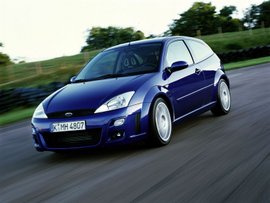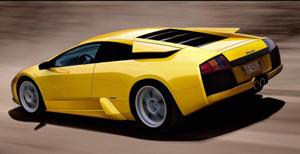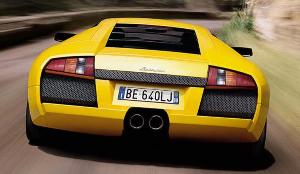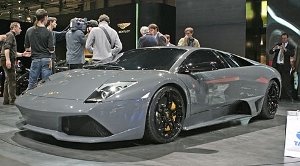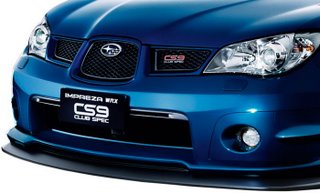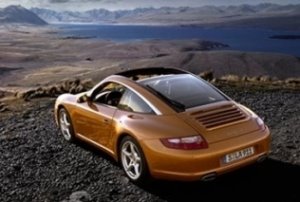
The
Ferrari Enzo is one of the most exclusive, unique cars in the world, a supercar of consummate performance, ability and style.
But for one Ferrari owner, the ‘normal’ Enzo is not enough.
So James Glickenhaus, an American car collector with a passion for the legendary racing cars of the 1960s commissioned Pininfarina to turn an Enzo into a unique car that has styling inspired by the Ferrari racing cars of from that decade, but which was also a useable road car.
Thus the Ferrari P4/5 was born.
The inspiration for the P4/5 and the source of the new car’s name is the legendary 1967 Ferrari 330 P4, the last evolution of the Ferrari 257/330 P-series cars, which was Ferrari’s weapon in the battle against the Ford GT40. Intermediate versions of these cars, such as the P2/3, reveal how the P4/5 name was produced for the new car. The Ferrari 330 P4 delivered the World Sports Car Championship to Ferrari in 1967, with victories at Monza and Daytona. The 330 P4 provided inspiration for the overall shape, features such as the domed roof and the rear wing, as well as details such as the vertical rear exhaust outlets.

“This project represents an exciting challenge, trying to meet the Customer’s requests in the best way possible without deteriorating the company’s approach to style and innovation,” says Andrea Pininfarina, Pininfarina S.p.A. Chairman and CEO. The car has been designed, engineered and built entirely by Pininfarina, bringing to life something that, just a few months earlier, was just a dream and creating a sort of symbiosis between the customer and Pininfarina along the path leading to definition of this astonishing model. Starting from a Ferrari Enzo, the aim was to produce a sole vehicle inspired by sport racing cars with extreme vocations: not just a show-car but a vehicle to be enjoyed on the road.
The project was overseen at every stage by James Glickenhaus.
“It was very exciting to take an active part in all the main phases of the project, from definition of styling to design of the vehicle,” he explains. “I was looking for a real car, not simply a show-car. I was able to understand the real complexity of producing a functioning custom-built car and how Pininfarina conducted the entire project is a masterly manner. Without forgetting the aerodynamic tests in the Pininfarina Wind Tunnel: absolutely fantastic!”
“I really think I have been very lucky, being able to bring to life what was just a dream until a few months ago,” he explains.

After freezing styling with various touch-ups to the initial sketches, the surfaces were defined using CAS modeling, then moving on to actual construction and assembly. More than 200 components were specifically developed through constant interaction between styling and design: from the bi-xenon lighting clusters specifically designed with an innovative system of yellow and white LEDs to the alloy wheels – 20-inch aluminum – milled from the block up to and including the aluminum and special steel in-sight hinges.
The sleek lines of the vehicle, characterized by a soft muscular touch, took shape on the body and are made entirely of carbon fiber. The tapered profile of the nose highlights both its aerodynamic function and the car’s new look; the central body is dominated by the single-shell windscreen, while the car is accessed via two butterfly type doors. The rear features powerful sides with the embedded teardrop type transparent rear window which also acts as engine cover and from which ceramic-coated exhaust tips peep out, as on racing cars of the Sixties.
“The entire vehicle expresses elegance and fluidity with the clear-cut, uncluttered lines that are typical of Pininfarina’s style,” stresses Ken Okuyama, Director of Pininfarina Styling.
Considerable attention has been dedicated to aerodynamics with continuous testing at the Pininfarina Aerodynamic and Aero-acoustic Research Center of Grugliasco (Turin, Italy) in an effort to reach the highest levels of performance combined with perfect functionality of all the appendices integrated in the body of the vehicle.

The re-styling of the Enzo was not restricted only to the outside of the car but continued also when defining the interior, completely redesigned according to the customer’s indications.
“Pininfarina has been a strong stakeholder on the automotive scene for many years, as confirmed by the five new productions launched between the end of 2005 and 2006, including the Alfa Romeo Spider, for which we also followed up design and development, and the Alfa Romeo Brera which we also engineered,” says Andrea Pininfarina.
“The Ferrari P4/5 by Pininfarina and the Ferrari 612 Scaglietti “K” by Pininfarina – built for Mr. Kalikow and presented in April at Villa d’Este Concours d’Elegance - give us a chance to demonstrate our excellent creativity, making our know-how available to special customers in order to provide a real personal experience that goes well beyond simply the possibility of designing their own car.”
 The Porsche Cayman S is a mid-engine 2-seat sports car launched in the 2006 model year. It is based on the Porsche Boxster, but has a stiffer chassis due to its fixed roof, and also benefits from correspondingly stiffer suspension tuning.
The Porsche Cayman S is a mid-engine 2-seat sports car launched in the 2006 model year. It is based on the Porsche Boxster, but has a stiffer chassis due to its fixed roof, and also benefits from correspondingly stiffer suspension tuning. Some Specifications
Some Specifications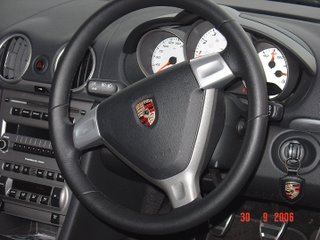 Handling is perfect, very responsive on all pedals. Inside it, nothing is impressive, the basics stuff, cd-radio, a/c and stuff like that, the only thing that is unique is probably the PSM button note1 which is only seen in the new Porsches. And the only thing that tells you its a porsche is of cos the signature badge.
Handling is perfect, very responsive on all pedals. Inside it, nothing is impressive, the basics stuff, cd-radio, a/c and stuff like that, the only thing that is unique is probably the PSM button note1 which is only seen in the new Porsches. And the only thing that tells you its a porsche is of cos the signature badge. 
